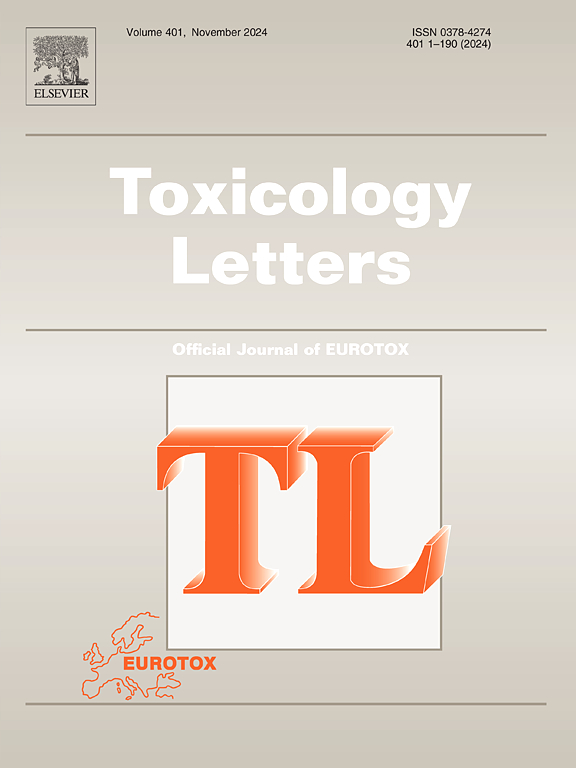马兜铃酸 I 通过上调吲哚胺 2,3-二氧合酶-1(IDO1)的表达促进肾小管间质纤维化。
IF 2.9
3区 医学
Q2 TOXICOLOGY
引用次数: 0
摘要
马兜铃酸 I(AAI)具有强烈的肾毒性,可导致 "马兜铃酸肾病(AAN)"。马兜铃酸肾病的特征是广泛的肾间质纤维化。有报道称,吲哚胺 2,3-二氧合酶-1(IDO1)可促进肾脏疾病中的肾脏纤维化,但目前尚不清楚 IDO1 在 AAI 诱导的肾脏纤维化中是如何发挥作用的。在这项工作中,我们系统地研究了IDO1在AAI诱导的肾小管间质纤维化中的作用。结果显示,AAI诱导肾小管上皮细胞和小鼠肾脏中IDO1表达上调。抑制 IDO1 的表达可降低纤维化相关标志物 α-SMA、COL-I 和 FN 的水平,改善肾小管上皮细胞纤维化。它还能改善小鼠的肾功能,减少胶原沉积,改善肾间质纤维化。此外,我们还发现抑制 IDO1 可降低凋亡蛋白 BAX 的表达,提高 BCL-2 蛋白的表达,减少细胞凋亡。上述研究表明,IDO1是AAI引起的肾小管间质纤维化的作用靶点,抑制IDO1可能是治疗AAI引起的肾小管间质纤维化的可行方法。本文章由计算机程序翻译,如有差异,请以英文原文为准。
Aristolochic acid I promotes renal tubulointerstitial fibrosis by up-regulating expression of indoleamine 2,3-dioxygenase-1 (IDO1)
Aristolochic acid I (AAI) is strongly nephrotoxic and can cause "Aristolochic acid nephropathy (AAN)". Aristolochic acid nephropathy is characterized by extensive renal interstitial fibrosis. However, the exact mechanism by which it occurs has not been fully elucidated. lt has been reported that indoleamine 2,3-dioxygenase-1 (IDO1) promotes renal fibrosis in renal disorders, but it is unclear how IDO1 functions in AAI-induced kidney fibrosis. In this work, we systematically examined the role of IDO1 in AAI-induced renal tubulointerstitial fibrosis. The results showed that AAI induced upregulation of IDO1 expression in renal tubular epithelial cells and mouse kidney. Inhibition of IDO1 expression reduced the levels of fibrosis-associated markers α-SMA, COL-I and FN and ameliorated renal tubular epithelial cell fibrosis. It also improved renal function, reduced collagen deposition, and ameliorated interstitial fibrosis in mice. Moreover, we discovered that inhibition of IDO1 decreased the expression of the apoptotic protein BAX, raised the expression of BCL-2 protein, and reduced apoptosis. The above studies suggest that IDO1 is a target of action in renal tubulointerstitial fibrosis caused by AAI, and inhibition of IDO1 may be a viable approach for the therapy of AAI-induced renal tubulointerstitial fibrosis.
求助全文
通过发布文献求助,成功后即可免费获取论文全文。
去求助
来源期刊

Toxicology letters
医学-毒理学
CiteScore
7.10
自引率
2.90%
发文量
897
审稿时长
33 days
期刊介绍:
An international journal for the rapid publication of novel reports on a range of aspects of toxicology, especially mechanisms of toxicity.
 求助内容:
求助内容: 应助结果提醒方式:
应助结果提醒方式:


